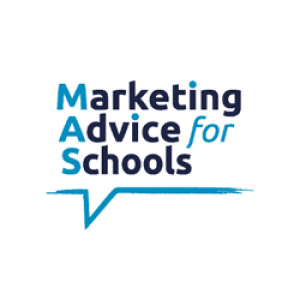London’s BETT Show is one of the world’s largest education gatherings – with over 34,000 attendees this year from 146 countries. The focus is on education technology, but there’s also huge interest from delegates in all aspects of running schools.
I was delighted to be asked to deliver a marketing update to the school leaders present at the event – and even more so when the topic chosen was ‘establishing your school and trust’s brand’. It’s a topic that gets to the heart of why schools need marketing – to build on their existing strengths and make sure that stakeholders know what schools are delivering.The notes below illustrate the slides that you can download by clicking here.
School brands are powerful but not necessarily based in reality…
I started the talk by showing just how durable and powerful school brands can be – in England we have one school that was founded in 597AD and is still going and another school that has produced 20 British Prime Ministers, including the current one. And of course we all know the most powerful school brand in the world? That’s right – Harry Potter’s Hogwarts (in London at least you’ll see dozens on people wearing Hogwarts memorabilia every day…).
The final example of these is important though – Hogwarts doesn’t exist, although people have a clear impression of what it would be like. You can’t rely on people getting your brand ‘right’ – you need to work on it in order to succeed.
A brand mixes promises and proof – and both are essential
The key model to approach this is Hector Pottie’s ‘Brand vs Experience; Promise vs Proof’ one. It’s easy to find schools that have made great promises but not delivered them. And it’s equally easy to find schools that have really strong internal values but are suffering because they’re not effectively communicating them. Both need to be worked on.
So, how do you manage the promise and proof process? For me, it starts with Simon Sinek’s ‘Start with Why’ model. Don’t look first at your school’s results, or even how you teach – consider why you’re doing it. Interestingly many schools in England are being challenged to do exactly this in relation to their curriculum by the OFSTED school inspectorate. So you know you can do it!
I also highly recommend taking time to develop this further by involving all parts of your community. Trial new ideas, words and images and get people talking about them – until it’s right, succinct and memorable. Look at the examples in the slides – an amazing written promise from Saint James’ School, and a powerful visual one from Alderley Edge School for Girls.
But of course, the promise needs to be backed up with action, and that’s where effective storytelling comes in. You need to know what is happening around your school and be able to record and share it. Set out a clear content plan that focuses on the key messages in your ‘promise’, find out who in your community can help you (student, teachers, parents) and bring in external help where needed (such as photographers, videographers or social media experts). You can then mix promises and proof in your communications – look at the prospectus from St Bede’s College Manchester.
There’s no one way to extend a brand over many schools
The other challenge facing many at BETT was how to extend a brand over multiple schools – I spoke at the event to one MAT that is unsure how to use the opportunities of the trust to enhance local school brands without damaging them, and an international school chain that is facing a similar problem as it expands and opens different types of school.
The answer to both, in my opinion, is to carefully analyse the needs of the individual schools and their stakeholders and what the wider organisation can contribute best. My slides show different approaches – schools in the Learning for Life Partnership have schools with different uniforms while the MAT focuses on back-office support and staff development’, while the Harris Federation focuses on consistency in all areas to persuade parents to choose their schools.
Brands need nurturing
The final part of the talk concerned the impact of your brand. Many schools go through a cycle of branding and re-branding (usually based around a perceived need to freshen up a website or change a logo), while others stick with an unlived promise for too long and see a decline in admissions or find it harder to recruit staff.
The solution is to keep listening. Focus groups help you take the temperature of your stakeholders – are you meeting their needs and do they know what is great about your school now and how you are developing it? And you also need to keep monitoring key marketing metrics – not just whether you have enough applications each year to keep the school full, but how many people are coming to your events and visiting your website – and how your local area is changing.
With this information in mind, you can make small changes to your brand – focus on different messages, share different stories or reorganise your website so people can find information faster. You won’t need to start from scratch each time (and you’ll save a lot of money!) Think how little consumer brands like Shell or Coke have changed.





